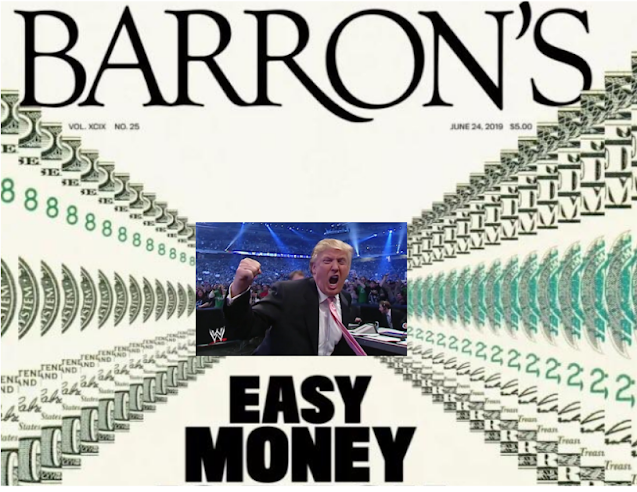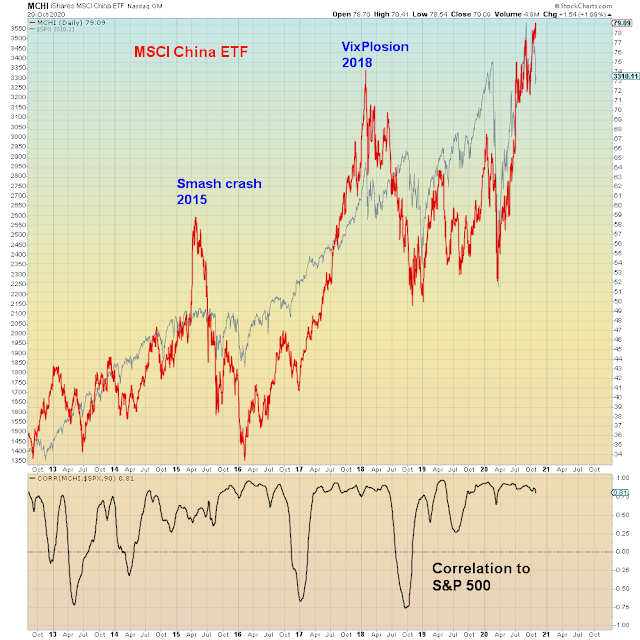No, they don't see it coming. They have a perfect track record to maintain, and easy money to count on...
Watching Fast Money tonight, one of the guests was Tony Dwyer of Cannacord Genuity. He enumerated all of the unprecedented risks - the raging pandemic, existential election, stimulus impasse, geopolitical rancor, but he forgot a few things: the imploded economy, record jobless claims, record Federal debt explosion, technology bubble, global deflation, looming credit crisis, and the bear market in the average stock. Which is why he's still bullish. Because to offset all of those ludicrous risks, he believes the Fed can support the market through it all. Free money. That's it. The Fed versus $350 trillion in misallocated capital in a 1930s economy. He got no pushback from the Fast Money traders.
Over on Marketwatch, behind their new paywall which I have yet to sponsor, this is one of the top headlines:
First off, this is the type of headline for some reason I would never publish. It's called tempting fate to destroy all future credibility. Secondly, it's patently not true, as indicated by current level of bullish active manager positioning (NAAIM), the Barron's October Big Money poll, record call option buying, Rydex bullish asset positioning, the Ameritrade Investor positioning index, and then there is the CBOE Skew index itself which was created specifically to measure crash risk sentiment:
"Prior to the stock market crash of October 1987, investors were not sensitive to tail risk and the curve of S&P 500 implied volatilities had the shape of a smile. Post-crash, investors started to hedge their exposure to tail risk by purchasing S&P 500 puts with low strike prices. This shift in demand bid up the prices of these puts relative to their value under a normal distribution. Black Scholes implied volatilities calculated from their prices therefore increased and transformed the implied volatility smile to a skew. When investors become more concerned about the potential for a market decline, SKEW increases and the implied volatility curve tends to steepen"
In other words, when skew is high, it means that gamblers are actually positioned for a crash. What they say in a sentiment poll, is another matter.
The current skew is not high. The highest level was two years ago in October 2018 right before the mid-term election, when the market tanked -20%.
Apparently, risks have receded in the meantime.
On the side of not seeing it coming, is history's largest IPO and Alibaba fintech spinoff "Ant Group", now scheduled for right after the election:
What could go wrong?
The locus of thermonuclear detonation will be the well conditioned rampant denial over the economy. No matter how bad the economy becomes, Republicans never stop believing that reflation is right around the corner. After all, their portfolio balances reflated months ago.
This past week we got news that net bearish Treasury bond shorts reached a new record. These people have been wrong for two years straight, as deflation has been continuous since the tax cut. Now in the depths of an accelerating pandemic, they've decided to go ALL IN on a position that exploded after the election in 2008.
Suicidal.
Sadly, the Fed can't bail out everyone.
And when the riots start they won't.
One more reason to buy stocks:
Civil war
“Maybe I’m just looking at the news too much, but there are hints of civil war depending on who wins,” Ms. Johnson said








